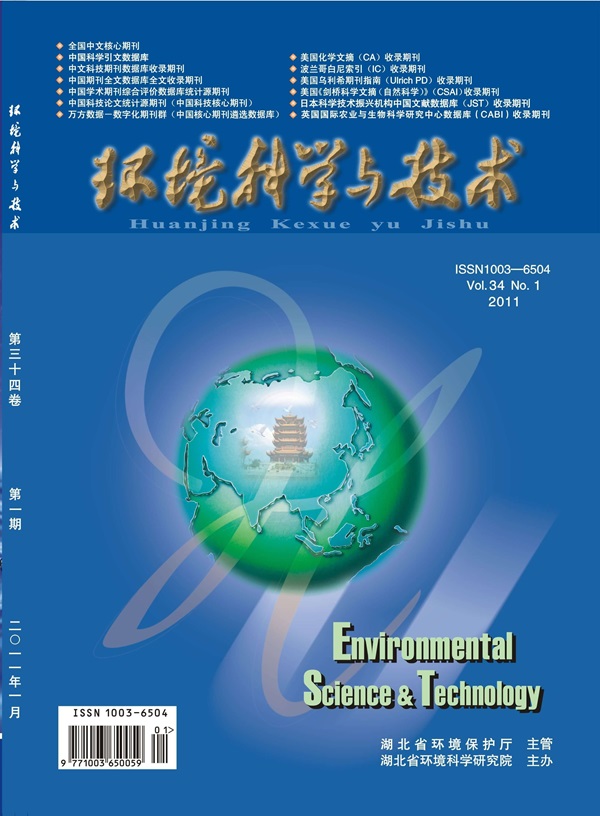One-Step Strategy to Maximize Single-Atom Catalyst Utilization in Nitrate Reduction via Bidirectional Optimization of Mass Transfer and Electron Supply
IF 10.8
1区 环境科学与生态学
Q1 ENGINEERING, ENVIRONMENTAL
引用次数: 0
Abstract
Single-atom catalysts offer exceptional performance but face practical challenges due to complex synthesis and low efficiency caused by mass transfer resistance. In this study, based on a simple one-step pyrolysis method, we designed a Cu single-atom catalyst with high active site exposure and a locally electron-deficient environment (HE Cu1–N4) to achieve maximum utilization efficiency in electrocatalytic nitrate reduction (NO3RR). Using advanced characterization techniques, we confirmed that its unique 3D structure enhances Cu atom exposure and reduces nitrate (NO3–) mass transfer resistance. Synchrotron radiation and DFT calculations showed that adjusting the coordination environment induces a local electron-deficient effect in Cu atoms, increasing the electrostatic attraction to NO3–. HE Cu1–N4 achieved 100% NH3 selectivity across a wide range of NO3– concentrations, with an NH3 yield (5.09 mg h–1 mgcat–1) nearly 7-fold higher than that of the conventional unmodified Cu single-atom catalyst (Cu1–N2, 0.73 mg h–1 mgcat–1). Under pilot-scale conditions, HE Cu1–N4 demonstrated strong resistance to interference and excellent stability in complex water systems. A simple modification method enhanced the utilization efficiency of single atoms in single-atom catalysts, significantly improving the catalytic activity of the material. Moreover, this straightforward synthesis strategy holds promise for the large-scale production of single-atom catalysts, paving the way for practical engineering applications.

通过双向优化传质和电子供应,一步策略最大化单原子催化剂在硝酸盐还原中的利用率
单原子催化剂具有优异的性能,但由于合成复杂和传质阻力导致的效率低下,在实际应用中面临挑战。本研究基于简单的一步热解法,设计了一种具有高活性位点暴露和局部缺电子环境的Cu单原子催化剂(HE Cu1-N4),以达到电催化硝酸还原(NO3RR)的最大利用效率。利用先进的表征技术,我们证实了其独特的3D结构增强了Cu原子暴露并降低了硝酸盐(NO3 -)传质阻力。同步辐射和DFT计算表明,调整配位环境会引起Cu原子的局部缺电子效应,增加对NO3 -的静电吸引力。在较宽的NO3 -浓度范围内,Cu1-N4对NH3的选择性达到100%,NH3的产率(5.09 mg h-1 mgcat-1)比传统未修饰的Cu单原子催化剂(Cu1-N2, 0.73 mg h-1 mgcat-1)高出近7倍。在中试条件下,HE Cu1-N4在复杂水系中表现出较强的抗干扰性和良好的稳定性。一种简单的改性方法提高了单原子催化剂中单原子的利用效率,显著提高了材料的催化活性。此外,这种简单的合成策略为大规模生产单原子催化剂提供了希望,为实际工程应用铺平了道路。
本文章由计算机程序翻译,如有差异,请以英文原文为准。
求助全文
约1分钟内获得全文
求助全文
来源期刊

环境科学与技术
环境科学-工程:环境
CiteScore
17.50
自引率
9.60%
发文量
12359
审稿时长
2.8 months
期刊介绍:
Environmental Science & Technology (ES&T) is a co-sponsored academic and technical magazine by the Hubei Provincial Environmental Protection Bureau and the Hubei Provincial Academy of Environmental Sciences.
Environmental Science & Technology (ES&T) holds the status of Chinese core journals, scientific papers source journals of China, Chinese Science Citation Database source journals, and Chinese Academic Journal Comprehensive Evaluation Database source journals. This publication focuses on the academic field of environmental protection, featuring articles related to environmental protection and technical advancements.
 求助内容:
求助内容: 应助结果提醒方式:
应助结果提醒方式:


